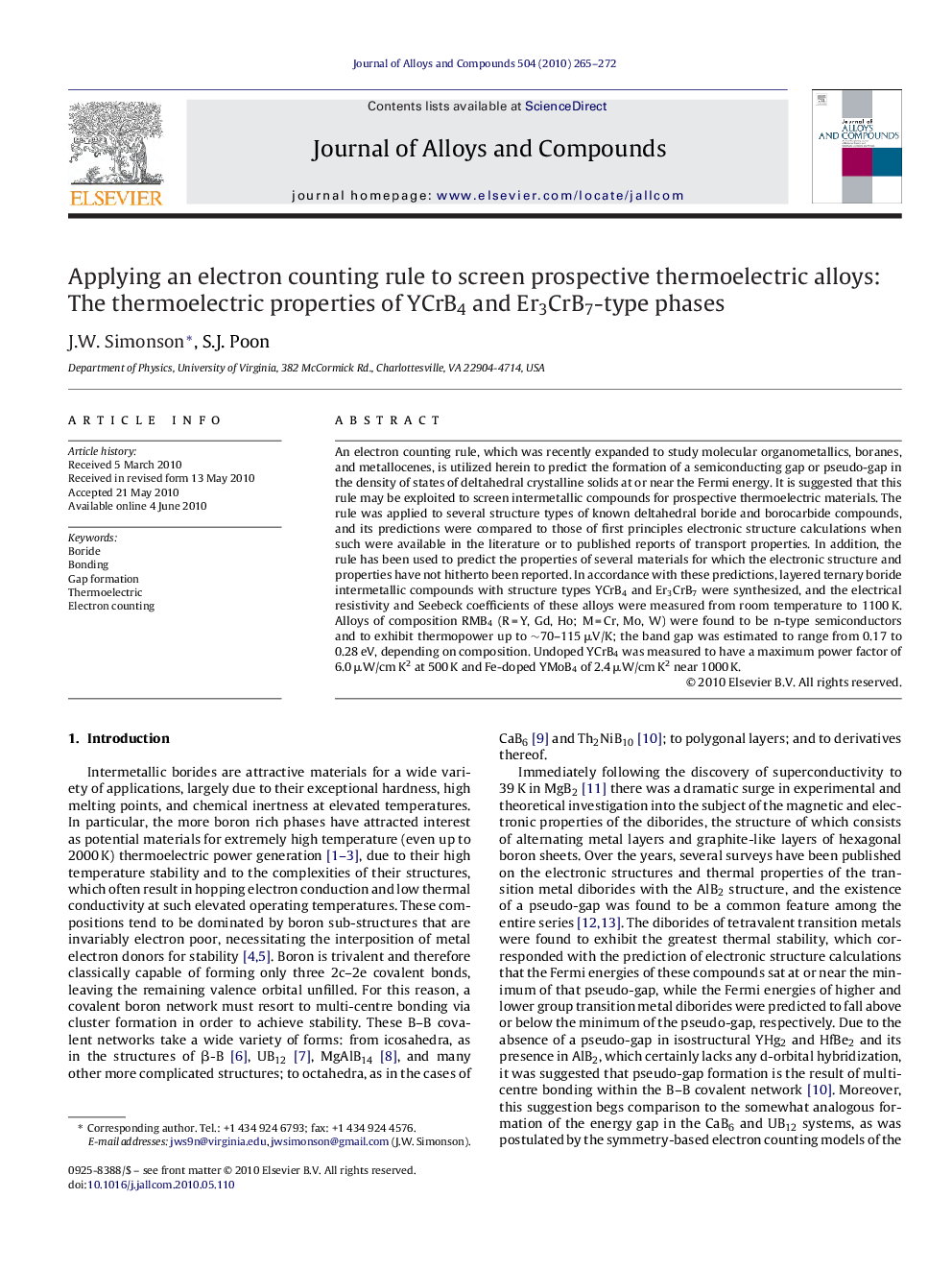| Article ID | Journal | Published Year | Pages | File Type |
|---|---|---|---|---|
| 1618188 | Journal of Alloys and Compounds | 2010 | 8 Pages |
An electron counting rule, which was recently expanded to study molecular organometallics, boranes, and metallocenes, is utilized herein to predict the formation of a semiconducting gap or pseudo-gap in the density of states of deltahedral crystalline solids at or near the Fermi energy. It is suggested that this rule may be exploited to screen intermetallic compounds for prospective thermoelectric materials. The rule was applied to several structure types of known deltahedral boride and borocarbide compounds, and its predictions were compared to those of first principles electronic structure calculations when such were available in the literature or to published reports of transport properties. In addition, the rule has been used to predict the properties of several materials for which the electronic structure and properties have not hitherto been reported. In accordance with these predictions, layered ternary boride intermetallic compounds with structure types YCrB4 and Er3CrB7 were synthesized, and the electrical resistivity and Seebeck coefficients of these alloys were measured from room temperature to 1100 K. Alloys of composition RMB4 (R = Y, Gd, Ho; M = Cr, Mo, W) were found to be n-type semiconductors and to exhibit thermopower up to ∼70–115 μV/K; the band gap was estimated to range from 0.17 to 0.28 eV, depending on composition. Undoped YCrB4 was measured to have a maximum power factor of 6.0 μW/cm K2 at 500 K and Fe-doped YMoB4 of 2.4 μW/cm K2 near 1000 K.
